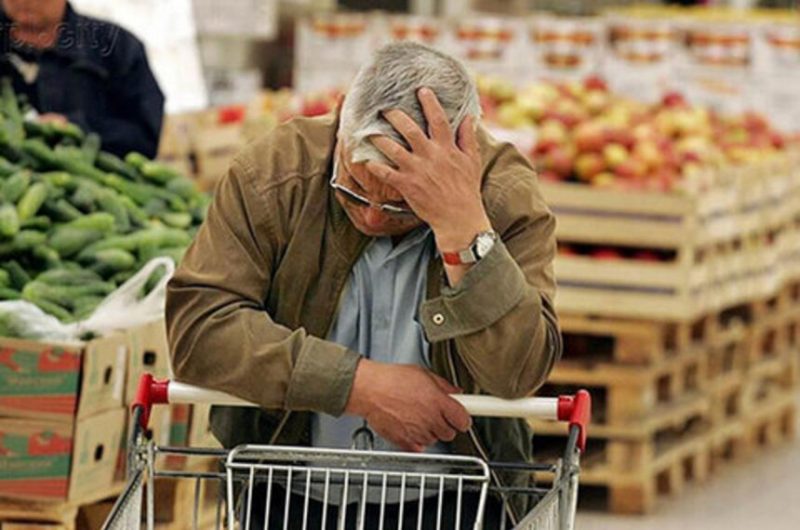What did the ‘Master of the Poor’ do with people’s livelihood?
The Statistical Center has released its latest report on the average price of selected food items in urban areas, a report that has heightened concerns about the living conditions of people and indicates an unprecedented decline in the level of social welfare in the past 10 years.
The release of the inflation report in July 2022 sounded the alarm for economists. The inflation statistics in the first month of summer indicated a record-breaking point-to-point inflation rate in the last ten years. This comes while about a year has passed since the government of Ebrahim Raisi came to power, and the point-to-point inflation rate in July has exceeded 54%. However, a closer look at the details of the recent report reveals the worsening living conditions among low-income groups.
Inflation of food items and the livelihood of low-income individuals
According to the new report from the Statistical Center of Iran in July 2022, the prices of 53 selected food items were published, revealing very concerning information. Among these items, 34 had inflation rates higher than the point-to-point inflation rate of 528% in urban areas. This fact indicates the widespread impacts of implementing the plan to remove the 4,200 Toman exchange rate for essential goods, which the government of Ebrahim Raisi has put on its agenda.
Disaster on people’s tables
Among the 53 selected food items, the highest price increases were for liquid oil, solid oil, Iranian rice, potatoes, and pasta, respectively. Items like canned tuna, watermelon, carbonated drinks, and carrots registered the lowest price surges in July 2022 compared to the same period last year. Studies show that, for example, the price of liquid oil in July 2022 increased by more than 327% compared to the same period last year. By looking at the table of price fluctuations, we notice a widespread surge among carbohydrate-containing food items, which are mainly used by low-income groups. For example, items like Iranian rice, potatoes, and pasta have increased by 188%, 173%, and 166%, respectively, compared to the same period last year during Rouhani’s government. This fact indicates the impact on low-income groups since starchy foods are mainly used by lower-income deciles due to their lower prices compared to protein-rich foods. In fact, the recent report from the Statistical Center indicates unprecedented damage from the economic policies of Ebrahim Raisi’s government on the deprived and vulnerable groups. This is while Raisi had promised that removing the preferential exchange rate would only lead to price increases for four items, but over time it became clear that the thirteenth government, with its unrefined and hasty actions, has led to unprecedented inflation records in the country. As mentioned, the more concerning point is that the cost of the thirteenth government’s unprofessional economic adventures has fallen mostly on the shoulders of the deprived, whom Raisi has always claimed to support.

